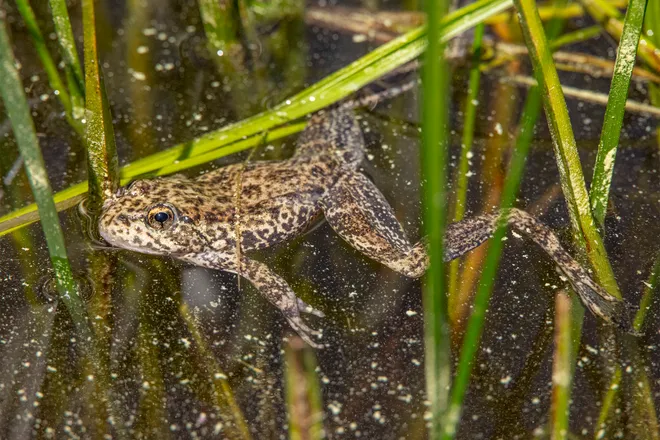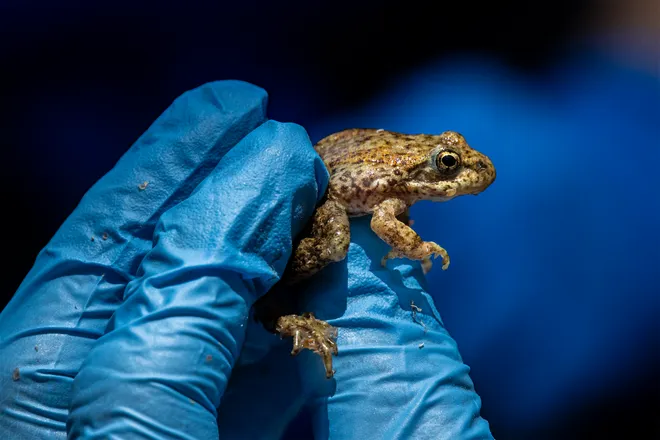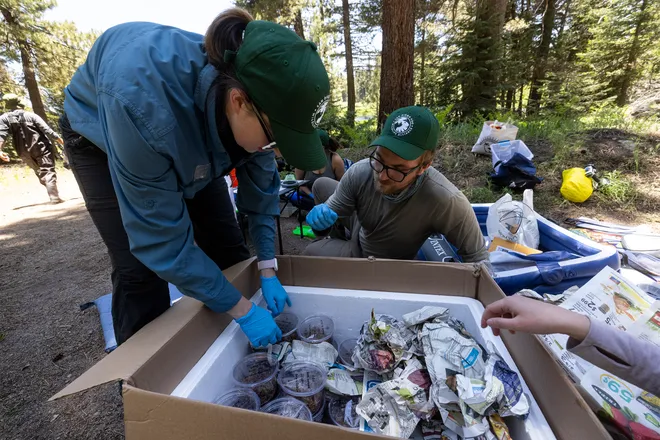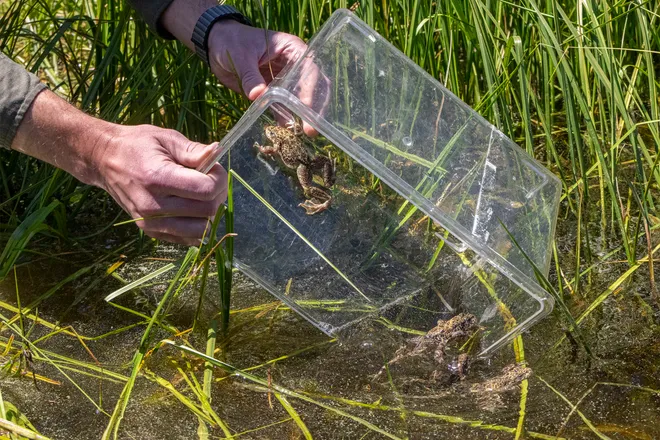Facing an uncertain future, 70 endangered yellow-legged frogs released in California lake

A species of frogs in Southern California whose future was once uncertain may have hope for survival in the wild thanks to a multi-agency breeding and reintroduction program.
More than 70 endangered mountain yellow-legged frogs have recently made their home in a lake in the San Bernardino Mountains, where wildlife researchers plan to monitor them to ensure they settle in and thrive.
The release marks the first time that the Southern California population of the species has been reintroduced into a lake instead of a mountain stream, according to a news release this week from the San Diego Zoo Wildlife Alliance. The alliance, a nonprofit conservation group, partnered with Henry Doorly Zoo and Aquarium in Omaha, Nebraska, to breed and raise the medium-sized frogs before releasing them into their natural habitat.
Long-lost mammal found:Echidna named for David Attenborough captured on video in Indonesia
Mountain yellow-legged frogs are endangered species
The mountain yellow-legged frogs, with their distinct pebbly skin, consist of two species − both of which have faced threats that have caused their populations to dwindle.
The southern mountain and Sierra Nevada varieties were both once abundant in high mountain lakes, ponds and streams throughout Southern California and the Southern Sierra Nevada, according to the California Department of Fish and Wildlife.
But their populations have shrunk thanks to threats from human encroachment, dams, climate change and pollution.
The endangered southern mountain yellow-legged frogs have experienced significant population decline since the 1960s, and as few as 500 of them may remain in their native habitats, according to the International Union for Conservation of Nature’s Red List. While the other Sierra Nevada population is not endangered, the species has similarly been on the decline and is listed as vulnerable.
That's why Debra Shier of the San Diego Zoo Wildlife Alliance said breeding programs for the species are critical for its survival.
"It’s important that we’re identifying and preserving suitable habitats in the mountain yellow-legged frogs’ native range that can hopefully prove hospitable for this species for years to come," Shier, the alliance's associate director of recovery ecology, said in a statement.
Yellow-legged frogs were bred between 2020 and 2022

The San Diego Zoo Wildlife Alliance has bred and reintroduced thousands of the frogs back into high-elevation mountain habitats since its program began in 2006.
The most recent cohort was bred between 2020 and 2022 at the wildlife alliance's Beckman Center for Conservation Research at the San Diego Zoo Safari Park in Escondido. They were raised at Omaha’s Henry Doorly Zoo and Aquarium in Nebraska before being brought back to California.
Other program partners include the U.S. Fish and Wildlife Service and the U.S. Geological Survey, the release states.
“We have the unique ability to act as a remote head-start facility for the conservation recovery team and are committed to helping conserve these frogs,” Derek Benson, amphibian conservation researcher and lead keeper at the Omaha’s Henry Doorly Zoo & Aquarium, said in a statement. “We are thrilled to be part of the return of these animals to a historic site as the population rebounds.”
New Zealand bird contest:John Oliver backed this puking bird – and upset the kiwi
More than 70 frogs released into San Bernardino lake

Once the more than 70 frogs were ready, the wildlife team released the animals into the San Bernardino Mountains in two waves.
The first group arrived from Omaha on the day of their release and were placed in a protective habitat at the lake for seven days as they adjusted to their new surroundings. Throughout the week, the team monitored the frogs daily and fed them a variety of insects, including those collected from their environment.
The second group of frogs arrived the following week and were released into the lake alongside the initial group.

It was the first time the team released the frogs into a lake instead of a stream. Lakes are less likely to dry up in a drought, but the wildlife alliance said it will evaluate the frogs, which are microchipped, to determine which reintroduction strategy is more beneficial.
“Lakes have the advantage of more permanent water that is less likely to dry up in a drought,” Shier said. “When water habitats like streams do begin to lose water, adult frogs may be able to move, but tadpoles can’t."
Eric Lagatta covers breaking and trending news for USA TODAY. Reach him at elagatta@gannett.com

Disclaimer: The copyright of this article belongs to the original author. Reposting this article is solely for the purpose of information dissemination and does not constitute any investment advice. If there is any infringement, please contact us immediately. We will make corrections or deletions as necessary. Thank you.





